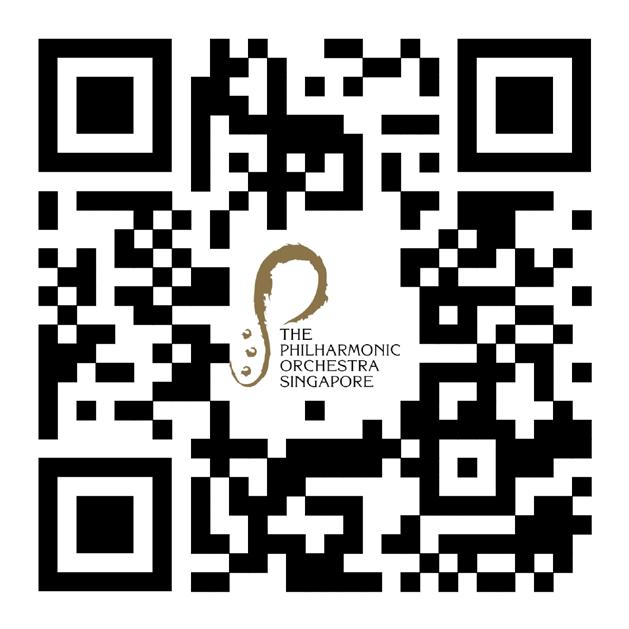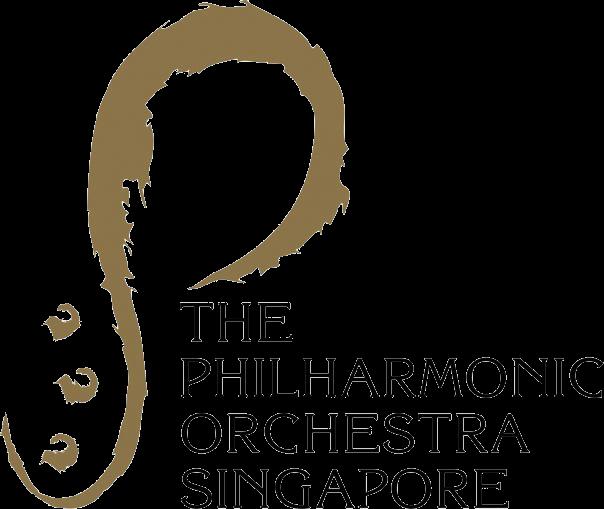
THE PHILHARMONIC ORCHESTRA PRESENTS THE SIBELIUS SYMPHONY CYCLE


THE PHILHARMONIC ORCHESTRA PRESENTS THE SIBELIUS SYMPHONY CYCLE
3 MARCH
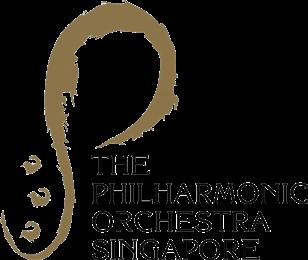


The Philharmonic Orchestra presents SIBELIUS COMPLETE SYMPHONIES (III)
The Philharmonic Orchestra Singapore Lim Yau, conductor
Symphony No. 5 in E-flat major, Op. 82
I Tempo molto moderato
II Andante mosso, quasi allegretto
III Allegro molto
Symphony No. 6 in D minor, Op. 104
I Allegro molto moderato
II Allegretto moderato
III Poco vivace
IV Allegro molto
Symphony No. 7 in C major, Op. 105
Single continuous movement
Concert duration is approximately 2 hours including 20 minutes intermission.
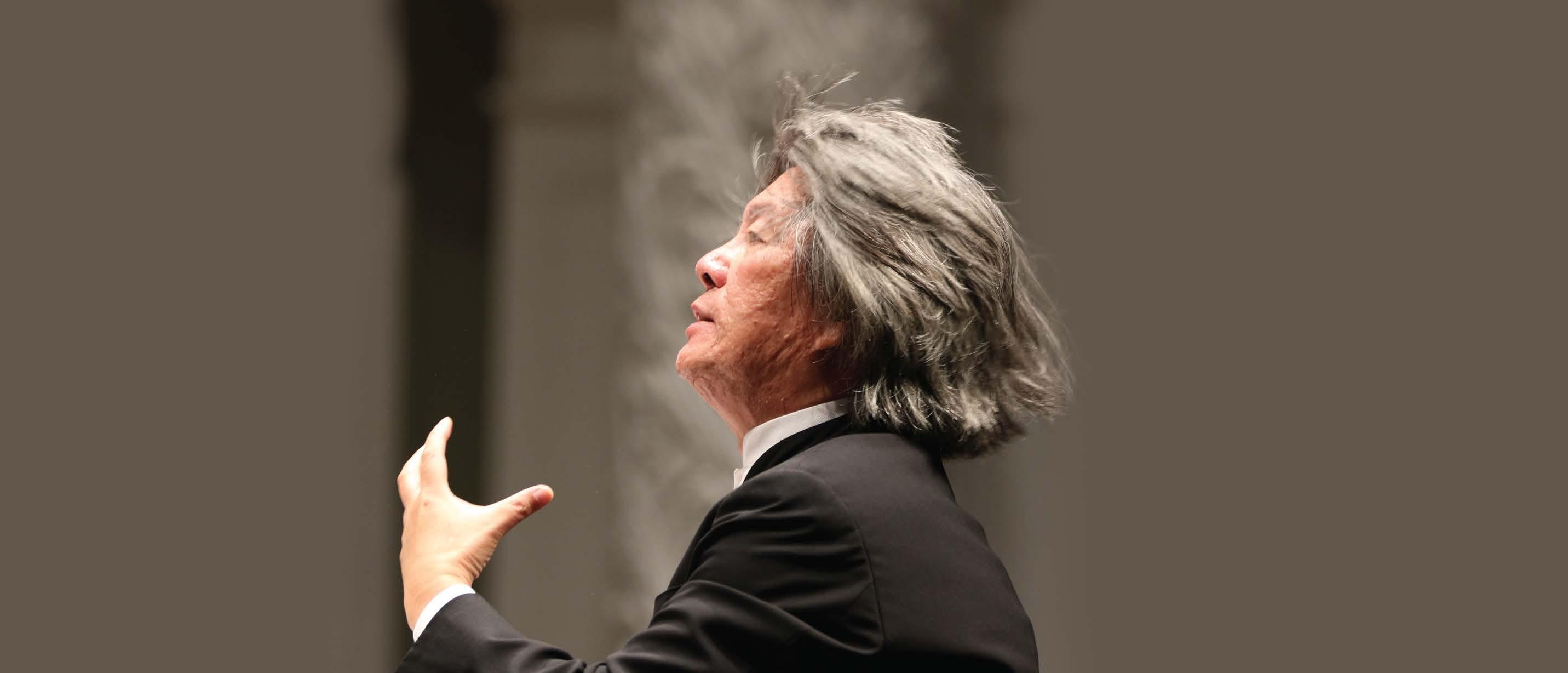
Lim Yau’s status as Singapore’s preeminent conductor is underpinned by a distinguished and enduring career. In addition to a long association with the Singapore Symphony Orchestra since its founding, Lim Yau’s work in choral music, opera, ballet, and contemporary music remains unparalleled.
He is a Cultural Medallion recipient and in 2011 was conferred the COMPASS Lifetime Achievement Award. More recently he was conferred the Fellow of the Royal College of Music (FRCM) in 2022 by the Royal College of Music, London.
A frequent collaborator with internationally acclaimed artists, Lim Yau has partnered Sumi Jo, Giacomo Aragall, Marc-André Hamelin, Steven Osbourne, Dmitri Makhtin, Gordon Hunt, Sharon Isbin, Isabelle Moretti, Simon Preston, the Anonymous Four, and Omara Portuondo.
As an avid opera and ballet conductor, Lim Yau has conducted more than 20 opera and ballet productions with the Singapore Lyric Opera, Singapore Dance Theatre, among others.
As performing groups founded under the direction of Lim Yau, The Philharmonic Orchestra and The Philharmonic Chamber Chorus have both evolved into key players of Singapore’s musical landscape, recognised for their high standards of performances and a niche in original and unique programming concepts.
Testament to his dedication to new music is an impressive record of performances under his direction. In addition to giving Singaporean premieres of works by James Macmillan, Tan Dun, John Adams and John Corigliano, Lim Yau remains the only conductor to have premiered works by every major Singaporean composer, most notably the first Singaporean opera Bunga Mawar by the late Leong Yoon Pin.
Currently Artistic Director of NAFA’s School of Music, Lim Yau is devoted to the nurturing and development of young musicians.
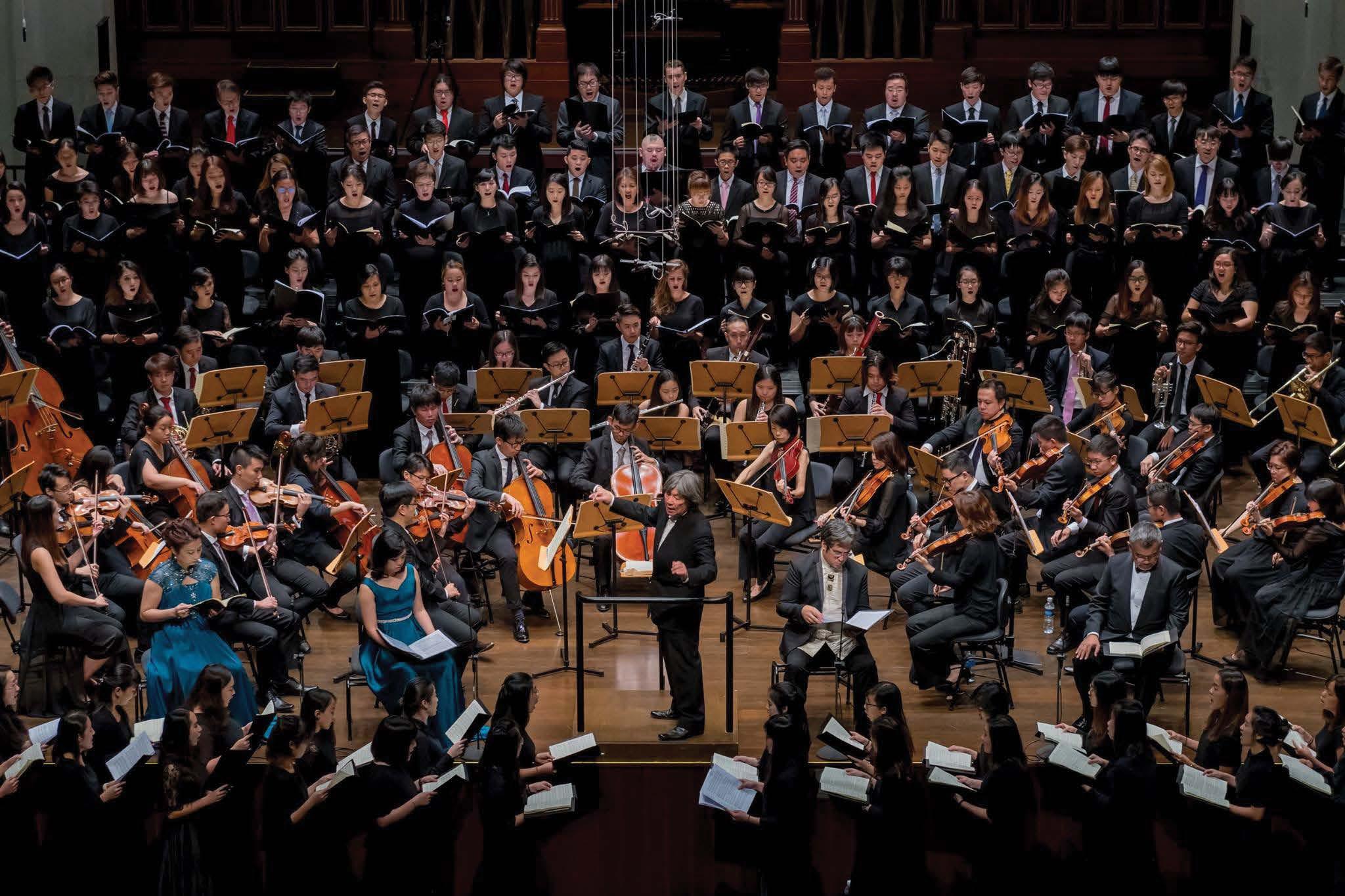
The Philharmonic Orchestra, formerly the Philharmonic Chamber Orchestra, is a project initiated by Lim Yau in 1998.
Born of its early activities as a pit orchestra, TPO quickly became the collaborative orchestra of choice, accompanying over 15 productions by the Singapore Dance Theatre and Singapore Lyric Opera between 1999 and 2008. TPO was invited by Esplanade – Theatres on the Bay to accompany Richard Einhorn’s Voices of Light (music set to the 1928 silent film Joan of Arc), as well as artistes ranging from K.D. Lang, Omara Portuondo, Aska (of Chage and Aska), David Foster and Andrea Bocelli. Till today, the orchestra comprises passionate young adults who are committed to the study and performance of seminal orchestral literature.
Helmed by Music Director Lim Yau, TPO distinguishes itself as an orchestra that delves deeply and whole-heartedly into the composers that shape the evolution of the western symphony. It has received critical acclaim for performances
of the symphonies of Beethoven (complete symphonies in 2003 and again in 2017), Schumann (complete symphonies in 2004), Brahms (complete symphonies in 2013), Haydn, Schubert, Tchaikovsky and Shostakovich. In its 2008 season, TPO became the first Singaporean orchestra to perform the complete Sibelius symphonies. 2012 marked another milestone when TPO was joined by acclaimed pianist Lim Yan in performing a complete cycle of piano concertos by Beethoven – the first in Singapore to feature a Singaporean pianist. Currently, TPO is in the midst of completing another cycle of the complete Sibelius Symphonies (2019-2024).
The vocal line is also close to TPO’s heart, with close collaborations with sister choir The Philharmonic Chamber Choir (TPCC) in concert, including in Brahms Tonight (2010) and Debussy Tonight (2014). For the Hallelujah Oratorio Society’s 40th Anniversary, TPO performed Handel’s Messiah (2017). Performances with vocal soloists have ranged from works by Ravel with Su Yingwen (2014), works by Berlioz with Teng Xiang Ting (2022), and An Enchanted Evening with Andrea Bocelli at the Singapore Botanic Gardens (2010).
With our strong belief that music is for all, and to present it to wider and fresh audiences, TPO works frequently with actors and presenters to explore orchestral repertoire. These include the Papa Haydn and You series (2009), a staged production of Stravinsky’s Soldier’s Tale (2009) as part of Esplanade’s Spectrum series, narrated performances of Stravinsky’s 100
Years Later series including the Firebird (2010) and Petrushka (2011), as well as Animal Stories featuring Prokofiev’s Peter and the Wolf and Poulenc’s Story of Babar in both English and Mandarin shows (2021). TPO’s composer-feature concerts sees actor William Ledbetter take viewers on biographical, historical and musical discoveries of great works such as Brahms’ First Symphony (Brahms Tonight! 2020), Debussy’s La Mer (Debussy Tonight! 2014), Bartok’s Concerto for Orchestra (Bartok Tonight! 2015) and Tchaikovsky’s Fourth Symphony (Tchaikovksy Tonight! 2016). Other composer-feature concerts highlighting Lutoslawski (2016), Ravel (2018) and Berlioz (2022) offer a focused snapshot of the richness offered by classical music.
A crowning series of community outreach productions began as the brainchild of Maestro Lim Yau and Choreographer Angela Liong, both Cultural Medallion artists. TPO’s 2013 collaboration with contemporary dance group The ARTS FISSION Company and Esplanade Theatres by the Bay, culminated in The Rite of Spring: A People’s Stravinsky, a significant production combining the creative energies of community senior citizens and youth volunteers in a multi-disciplinary presentation of Stravinsky’s seminal ballet. The same creative team reprised its collaboration with The Mazu Chronicle in the SG50 celebration year of 2015, performing works by pioneer generation Singaporean composers in a symphonic dance-theatre production, telling stories of Singapore’s maritime pioneers, whilst featuring community performers from Singapore’s pioneer generation. The partnership between TPO and ARTS
FISSION continued strong with garden•uprooted in 2018, melding dance-theatre with music by acclaimed Japanese composer Toru Takemitsu (Between Tides, Nostalgia, Rain Tree, and Tree Line).
In recent years, TPO explored less-known Classical works in Not the Big Three (2019), led by Resident Conductor Lin Juan. TPO also sought to calm 2020’s turmoil with socially distanced recordings of arrangements of Morricone’s Gabriel’s Oboe and Handel’s Ombrai Mai Fu. 2023 saw TPO collaborating in NAFA’s 85 th Anniversary concert with a programme featuring works by Prokofiev and Zechariah Goh, followed by an all-Rachmaninoff programme with George Harliono as soloist in the second piano concerto.
TPO’s hallmark yearly event is undoubtedly our well-loved New Year’s Eve Countdown Concerts, featuring crowd favourites, miniatures, and young conductors. Musicians in smaller-than-usual groups continued this tradition during social distancing, with a virtual show featuring chamber works in December 2020. Celebrating over ten years being an annual highlight at the Grand Dame of Empress Place –Victoria Concert Hall, this sell-out concert series continues to be a cherished fixture in Singapore’s concert calendar.
Orchestra Committee:
Albert Phang . Emerald Tan . Jonathan Francis Koh .
Kristi Anastasia Tan . Lin Juan . Sarah Wong
Established in 1984, the School of Music aims to provide a portfolio of music courses, which are both relevant to the Singaporean music performance and education scene, and also attractive to talented international students. NAFA is the only education institution in Singapore that offers diploma and degree programmes for both Chinese and Western music instrumentalists; the Bachelor of Music (Honours) and Bachelor of Education (Honours) in Instrumental & Vocal Teaching are offered in collaboration with the Royal College of Music, London (RCM) and supported by the Central Conservatory of Music, Beijing.
Over 200 diploma and degree students are supported by a distinguished international faculty. In addition to weekly public performances on campus, our student soloists, ensembles and orchestra can be heard regularly at performances in Singapore and abroad.
Musicians from violin, viola, cello and double bass sections are listed in alphabetical order.
* NAFA Orchestra
Chan Yoong Han, Principal
Celine Angir*
Cheryl Ho
Erlyn Alexander*
Lee Yanlin Erica*
Lina Wang
Liu Hesong*
Loh Hui En Lauren*
Margaret Teng
Ng Jing Han*
Regina Angelita Setiawan*
Sum Yuan Liang
Yamakawa Sakura*
Zhang Chunsheng*
Zhu Zunzun*
Lim Shue Churn, Principal
Abigail Soh Zhi Xuan
Ang Jia Yi*
Charmayn Chua
Cindy Lee
Hong Yaw Chang
Lee Lin Hwa*
Loh Lit Wung*
Matthew Yar
Shen Xing*
Wang Sijia*
Xu Nuo*
Ye Jingjing*
Zhang Jipeng*
Marietta Ku, Principal
Andrew Fung
Janice Tsai
Jonathan Francis Koh
Karis Ong
Leon Lai Tin Long*
Lin Shiqun*
Marissa Yee
Shen Huo*
Teh Chia Hui*
Lin Juan, Principal
Chee Jun Sian
Elton Teo Kai Jie*
Isaiah Ong Yue Yong*
Kenneth Lee
Peh Xiang Hong
Tang Ya Yun
Tan Si Pei, Principal
Chen Xueer*
Koh Yi Ling Tizane*
Kuek Jia Xin*
Lee Zi Xuan
Lim Roo Yee Claire*
Wang Xu
Alvin Chan, Principal
Liang Shi*
Samantha Lim Chuo Chern*
OBOE / ENGLISH HORN
Alyssa Yam, Principal
Lee Seojin*
Wang Yichuan*
Benjamin Wong, Principal
Natalie Gail*
Lin Keqi*
Low Xin*
BASSOON
Javlon Khayitov, Principal
Lim Tee Heong, Principal
Sam Armstrong, Principal
Hu Shaozhen*
Benjamin Xavier Lim*
TIMPANI
Putra Syahril bin
Mohamad Hilmi*
Randy Tan Chen Howe*
HORN
Christopher Shen, Principal
Harsharon Kaur
De Vera Cera Gabrielle Arca*
Koh Zi Lin Krystal*
Ren Zhaoying*
TRUMPET
Tan Han Yong, Principal
Nur Imaan binte Zulkifli*
Yong Yi Ting Amanda*
HARP
Lim Qi Qin*
Symphony No. 5 in E-flat major, Op. 82
Symphony No. 6 in D minor, Op. 104
Symphony No. 7 in C major, Op. 105
“I intend to let the musical thoughts and their development determine their own form in my soul.”
— 1912 DIARY ENTRY —
The seeds of Jean Sibelius’ final and most mature three symphonies were sown from the 1910s. Whilst his significant symphonic output spanned just over a quarter-century, the last three crystallised into their final forms over a remarkably short period in 1919-1925.
Living in Helsinki under the shadow of World War I, the Russian Revolution, and the Finnish Civil War, Sibelius was not spared from food rationing and near-starvation. Though both man and country were eventually liberated from “Red” pro-Russian rule by the democratic German-trained “Whites”, at least some Finnish stoicism still remains in these scores.
Our privilege today lies in objectively reviewing his late symphonies through this clear lens of hindsight, unperturbed by their surrounding historical tragedy, and observing these
pristine moments of serenity, agitation, nature, and emotion, and perhaps even glimpse eternity.
“God is opening his doors for a moment, and his orchestra is playing the fifth symphony.”
— 1914, AUTUMN, TO HIS FRIEND AND PATRON AXEL CARPELAN (1858-1919)—
The Fifth Symphony (1915, revised and published 1919) would manifest the peak of Sibelius’ powers and reputation, evident in its pervasive warmth and predominantly major key. The work having been commissioned by the Finnish government for his 50th birthday, 8th December 1915 was also thereupon declared a national holiday – Finnish Music Day.
As with Sibelius’ many struggles with perfectionism in his personal and artistic life, the Fifth went through three revisions. The first 1915 version had four movements, opening strangely without the horn-call sunrise that you will hear today, harbouring more dissonances, ending full but unspaciously. The 1916 version preliminarily meant for publication had notably and ingeniously fused the first two movements, reduced the closing chords, and cut a few slow passages.
“In the evening with the [Fifth] symphony… As if God the Father had thrown down pieces of mosaic out of the heaven’s floor and asked me to
solve how the picture once looked.”
— 1915 DIARY ENTRY —
The final 1919 version (which was very nearly condensed into a single movement) expresses a greater inner movement within Sibelius for unity and succinctness. Retaining the “fused” first and second movements, it is roughly symmetrical in tempo in overarching structure, and lightened by five minutes from the 1915 score:
I Tempo molto moderato – Allegro moderato (ma poco a poco stretto) – Vivace molto – Presto – Più presto (in E♭ major)
II Andante mosso, quasi allegretto – Poco a poco stretto –Tranquillo – Poco a poco stretto – Ritenuto al tempo I (in G major)
III Allegro molto – Misterioso – Un pochettino largamente –Largamente assai – Un pochettino stretto (in E♭ major)
Evading traditional symphonic forms, the first movement incessantly introduces and develops themes almost at will – the opening horn call, the falling winds, the undulating stepwise
strings, and the Nordic dissonant clashes interplay and dialogue in “rotations”. Sibelius employs several sleights of pen while the orchestra has to suffer extended momentum buildups, and the listener swept headlong into the thrilling stretto ending.
The second movement offers the respite of an endless lake beneath drops of moonlight. Still waters run deep as material from the first and third movements gradually appear reflected, slightly unfocused, reminding and priming the ear simultaneously while meticulously pulling together the multitude of scattered symphonic threads.
“Today at ten to eleven I saw 16 swans. One of my greatest experiences. Lord God, that beauty!”
— 1915 DIARY ENTRY IN SPRING —
The third and last movement buzzes like Santa Claus humming in a blizzard’s face, the chilling wind inevitably losing its bite to some divine jollity as it enters a broad horizon and meets a gorgeous fanfare called out by a flight of swans across a Scandinavian sky, before joining the sun in a singularly noteworthy triumphant constellation of chords.
“... politics darker than ever. And I think that my vocation as a composer is impossible now because everything revolves around [the Russian revolution]...”
— 1919 —
“[A symphony] emerges through an infinite number of small streams… the river discharges broadly and powerfully into the sea… But from where does one get the water – the music?”
— 1912 —
“[My sixth symphony] – is it merely a drop in the ocean or does it have any significance?”
— 1910 —
While Sibelius’ internal struggle between Romanticism and Mordernism played counterpoint to real global conflicts, a most surprising introspection precipitated between the world wars. Unlike his more outwardly forward-looking contemporaries who were busy experimenting with atonal writing or jazz, Sibelius’ had somehow branded his numbered symphonies thus – the Fifth having all movements in major keys, the Seventh firmly in C major, and the Sixth oddly published without any attributed key.
“Worked. Recognised today life’s perfection and my art’s greatness”
— 1922 SEPTEMBER, MONTHS BEFORE SIBELIUS’ SELF-IMPOSED DEADLINE FOR THE SIXTH; ONE MONTH AFTER THE DEATH OF HIS BROTHER CHRISTIAN “KITTI” SIBELIUS (1869 - 1922) — The elemental Sixth Symphony (1923) possesses the spirit of gushing streams and freezing winter storms against an icy landscape untouched by human hands. Whirling with the composer’s signature recurring motifs and undulating tempo undercurrents, the symphony in entirety is ingeniously bound to its musical coil by the Dorian scale:
IV Allegro molto moderato (in Dorian mode on D)
V Allegretto moderato (in Dorian mode on G)
VI Poco vivace (in Dorian mode on D)
VII Allegro molto (in Dorian mode on D – ending in Aeolian mode on D)
Interestingly composed of all rapid movements that spring forth and flow to nowhere, changing in form not substance, becoming a meditation and solemn hymn on the cycles of life. While we mortals carelessly observe the untamed wells of wisdom that is the world around us, this Symphony consciously pays tribute to nature’s perpetually merciless grace.
“In any case I do not think of a symphony only as music in this or that number of bars, but rather as an expression of spiritual creed, a phase in one’s inner life.”
— 1923, SHORTLY AFTER THE PREMIERE —
“The sixth symphony always reminds me of the scent of the first snow.”
— 1943 —
“The seventh forms a pair with the sixth. But it is not autobiographical. The ego is left behind, and things are seen from the point of view of humanity.”
— OSMO VÄNSKÄ, CONDUCTOR, 1998
—
“It is strange that something has become of me, because I have done so much in my life quite the opposite of what should have been done.”
— 1943 —
“These symphonies of mine are more confessions of faith than are my other works.”
—
1918, WHILE WORKING ON HIS THIRD REVISION OF HIS FIFTH SYMPHONY
—
“...the real ‘Jean Sibelius’ begins now. Wonder whether that name ‘symphony’ damages rather than benefits my symphonies. Ponder intensely how to allow my inner self –my fantasy – to speak.”
— 1914 —
Although Sibelius spoke of the Seventh Symphony (1924) in 1918, source material has been traced back as early as 1914. At its premiere in Stockholm (his only symphony not premiered in Helsinki), it was humbly titled “Symphonic Fantasy” (or Fantasia Sinfonica), though the composer subsequently accorded it the status of “Symphony No. 7 (in one movement)” upon publication in 1925.
A visionary vessel brimming with deceptively old-fashioned harmonies, it is punctuated at least three times by a massive fanfare marked “Aino”, after his wife – it was written during a tempestuous period in their marriage (Aino had ceased attending Jean’s concerts after he held a particularly drunken show in 1923), and may just have turned out to be one of the greatest and most complicated dedications ever conceived for a loved one.
“I, who owe you so much, can say that without you my life would have come to a standstill long ago and my achievements would be poorer and smaller.
It is no trifling matter to be the wife of a composer like me. The happy intervals, when the work is ready, are scarce, and the struggle in the dark of the night is long. The fact that you have endured these storms of our life is truly wonderful.
When I now express my heartfelt thanks to you, I have this gnawing feeling that I have so far done much less than what an artist in my position ought to do. I hope that it will still be possible for me to express my gratitude in deeds.
Lastly, I express the congratulations of my brother and sister and I ask you to remember how fond my mother was of you.”
— 1921, JEAN’S SPEECH AT AINO’S 50TH BIRTHDAY —“Do you really value the work you do with artificial inspiration? Even if you complete a work or two, they are nothing compared with what you could achieve.”
— AINO, ANGRY WITH HER HUSBAND’S ALCOHOLISM, IN A NOTE TO JEAN —
“Aino has been very sick for some time… Just hope to get the single one [i.e. the seventh symphony] completed. An urgent necessity.”
— 6 JAN 1924, LESS THAN THREE MONTHS BEFORE THE PREMIERE —
The logical conclusion and culmination of Sibelius’ lifelong obsession with musical compaction and linear fluidity, the Seventh encapsulates a slew of eliding momentums, blurring exposition with development with scene into a singular movement:
Adagio — | Vivacissimo — Adagio — | Allegro molto moderato — Un pochettino affretando — Allegro moderato — Poco a poco meno moderato | Vivace — Presto — Adagio — Largamente molto — Affetuoso — Tempo I
Heralded by a distant peal of timpani, a reverberating C major scale stops just short of fulfilment (only resolving at the very end of the symphony), forming the prime tension of the entire work. Strain intensifies in this introduction as various sections of the orchestra move in opposing directions in uneven cadences.
The first substantial section resembles a soulful yet unsettling chorale – rising motifs tend to be unanswered, building uncertainty repeatedly until a heroic brass call descending upon us (“Aino”) finally centres the music in glorious radiant relief.
Joy of meeting intersperses with farewell as troubled skies loom – twisted rising motifs return threateningly alongside a smoking tide of thunderclouds, when a terrifying deluge assaults us and as the wind howls, the second iteration of “Aino” appears through a gale that once spent, eventually dies down into a gentle sunbreak. Although Sibelius claimed the work to be not autobiographical, the music proceeds quite vividly into a compressed flashback of memories and moods, sprinkles of fragmented quotes, or a future tinted by aged glasses.
By now texturally pulled into taffy by constantly shifting tempi, the instrumental groups get progressively divided into smaller and smaller groups for the grand entrance of third “Aino”, a diffraction of infinite waves of concentrated pride. As the music approaches a heartrending parting, we are ceremoniously launched without warning into the void. Lost in the thinnest of atmospheres, “Aino” returns most tenderly
in the fading moments of the symphony, waltzing Sibelius back home as the C major scale is finally, finally complete.
“Always, when I am alone, my thoughts turn to Aino, that lovely woman.”
— 1927, DIARY ENTRY
—
The Seventh Symphony exerted immense influence on the musical world and the rest of the 20 th century. While not the first example of its kind in history by any measure, it spawned several one-movement symphonies amongst Western composers. The sinfonia of the 1700s, formalised in the multi-movement symphony of the 1800s almost to dogma, was finally free again.
“If I cannot write a better symphony than my Seventh, then it shall be my last.”
— CIRCA 1930S —
Poetically, sketches of a promised future symphony were likely burnt circa 1945.
“[Sibelius] was returning from his customary morning walk. Exhilarated, he told his wife Aino that he had seen a flock of cranes approaching.
‘There they come, the birds of my youth,’ he exclaimed. Suddenly, one of the birds broke away from the formation and circled once above Ainola. It then rejoined the flock to continue its journey.”
— ERIK TAWASTSTJERNA, MUSICOLOGIST AND BIOGRAPHER OF JEAN SIBELIUS, CIRCA 1955 —Further reading/listening:
Jean Sibelius by Daniel M. Grimley
Sticky Notes by Joshua Weilerstein
Jean Sibelius – the Website by The Finnish Club of Helsinki
and with thanks to notes by James M. Keller, Dr. Ilkka Oramo, Elizabeth Schwartz, Luke Smith
“For me, music begins where words end.”
— JEAN SIBELIUS (1865 - 1957) — Programme notes by Jonathan Francis Koh
The orchestra would like to express its heartfelt appreciation to the following organisations and people:
Nanyang Academy of Fine Arts Ensemble-in-Residence Partner
Design Collaterals
Antfarm Design
Video and Audio Recording
Dancing Legs Production
Concert Photography
Andrew Bi
Production and Logistics
Staff from Victoria Concert Hall
Toh Chik Kok (Uncle David) and team
Friends and Family
In collaboration with

With the support of

The Philharmonic Orchestra Society is a not-for-profit organisation that aims to enliven our communities with the arts.
Please consider supporting us as we continue to bring you more great music ahead. Your contribution of any amount will be greatly appreciated. Donations may be made via cheque to The Philharmonic Orchestra Society, or via PayNow (UEN: T02SS0143F, The Philharmonic Orchestra Society).
TPO Donation QR Code:











Please email mail@tpo.org.sg with your name, contact number and the amount donated, so that we can provide an acknowledgement and a receipt for your donation. Kindly note that we are not a registered charity or an Institution of a Public Character (IPC), and thus donations are not eligible for tax rebate.




tpo.org.sg
mail@tpo.org.sg

www.facebook.com/tposingapore





@thephilharmonicorchestra
www.youtube.com/user/PhilharmonicSG
